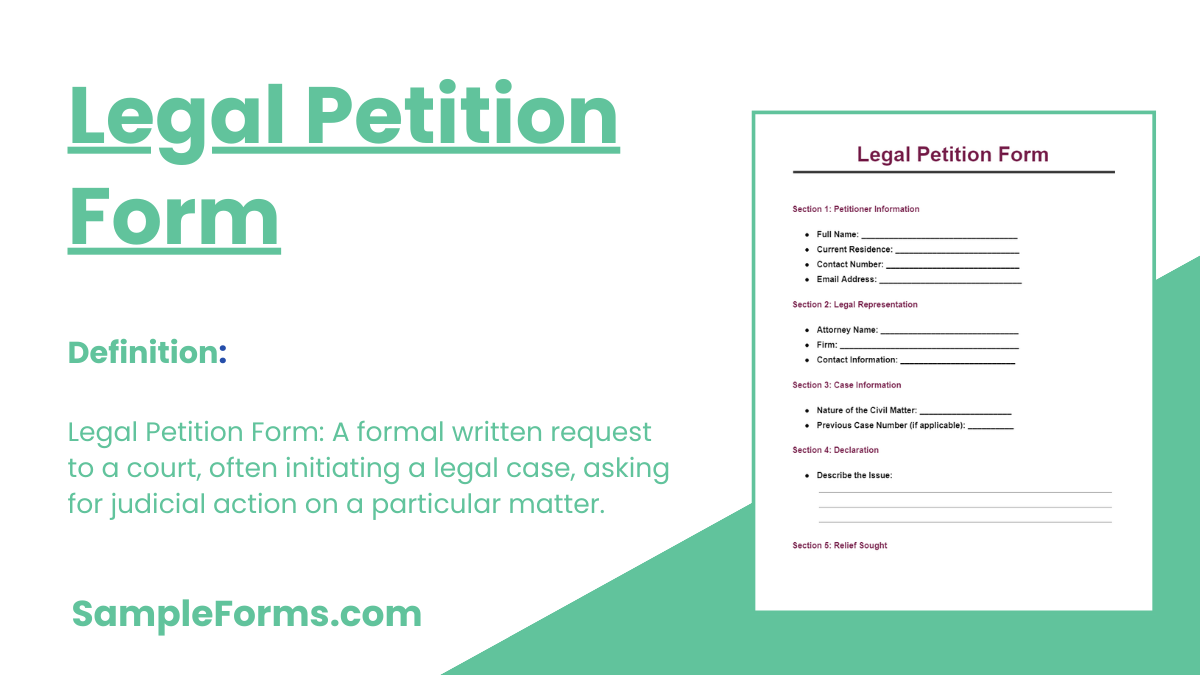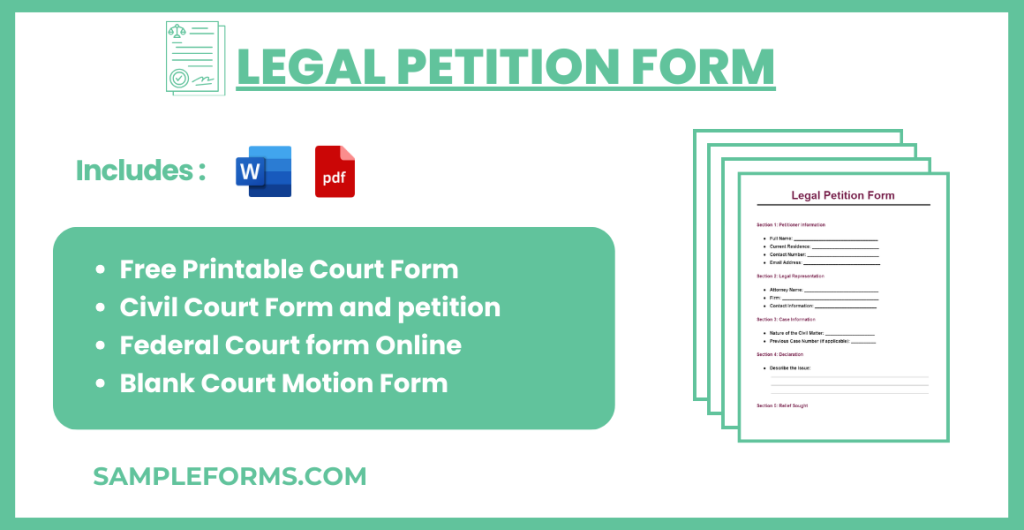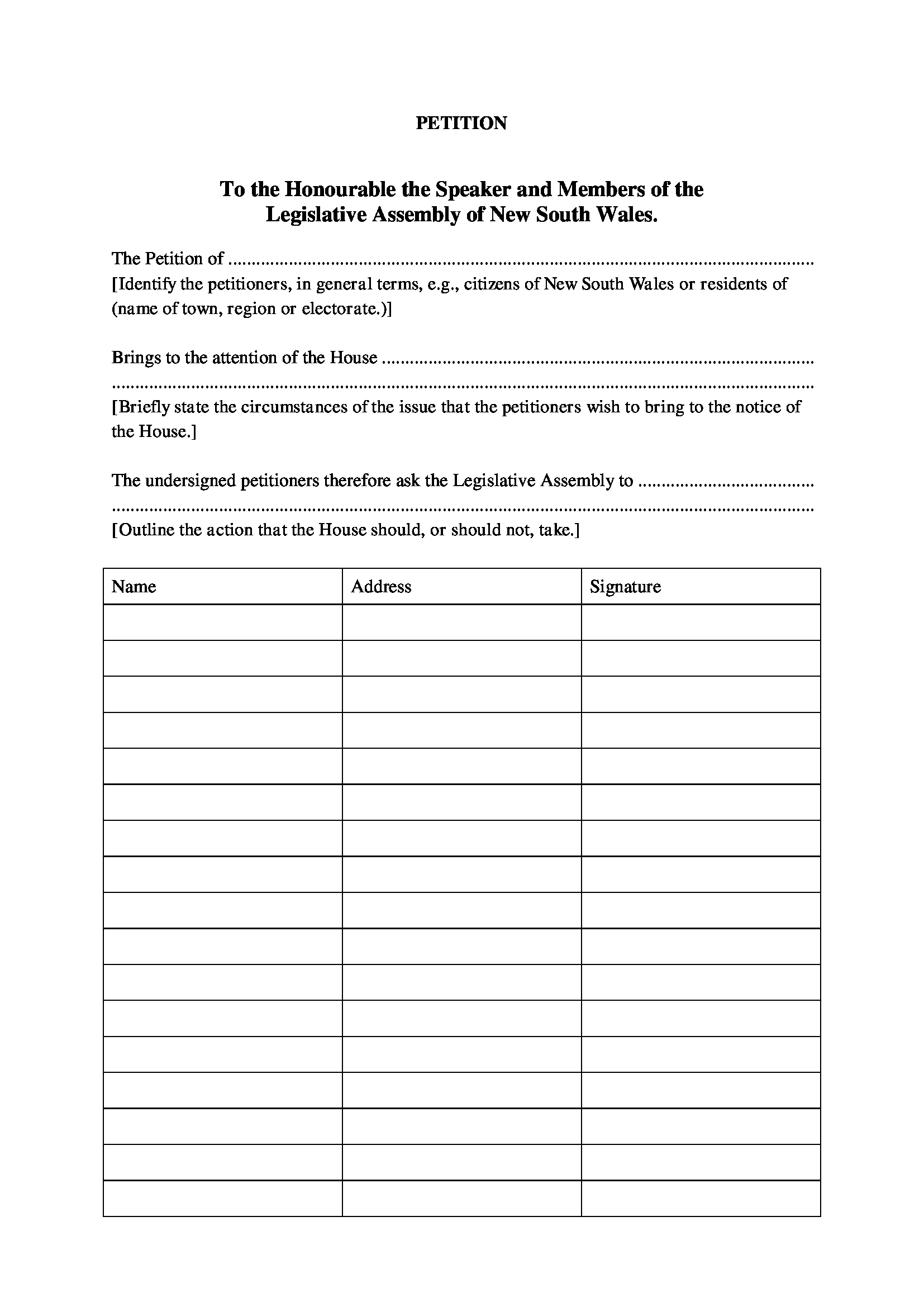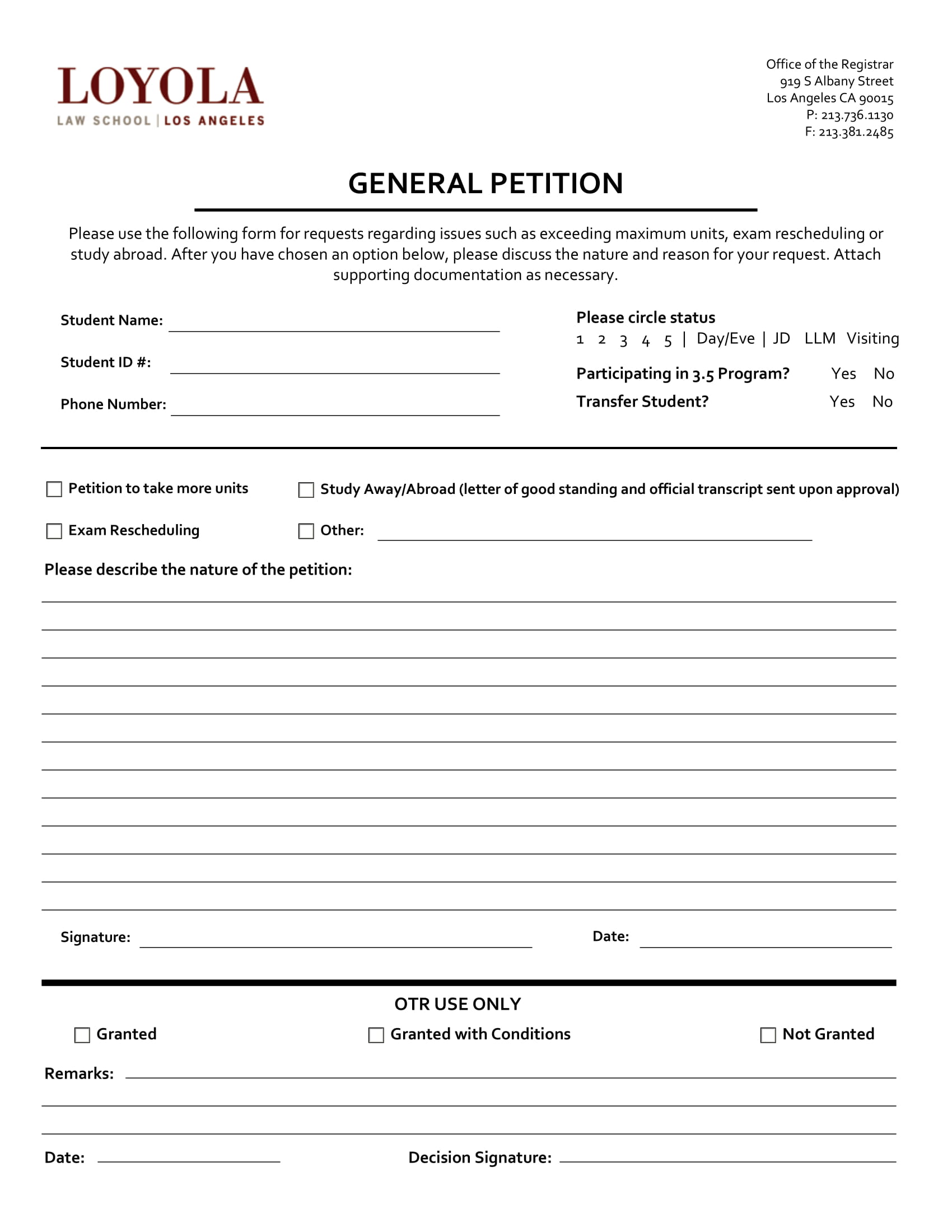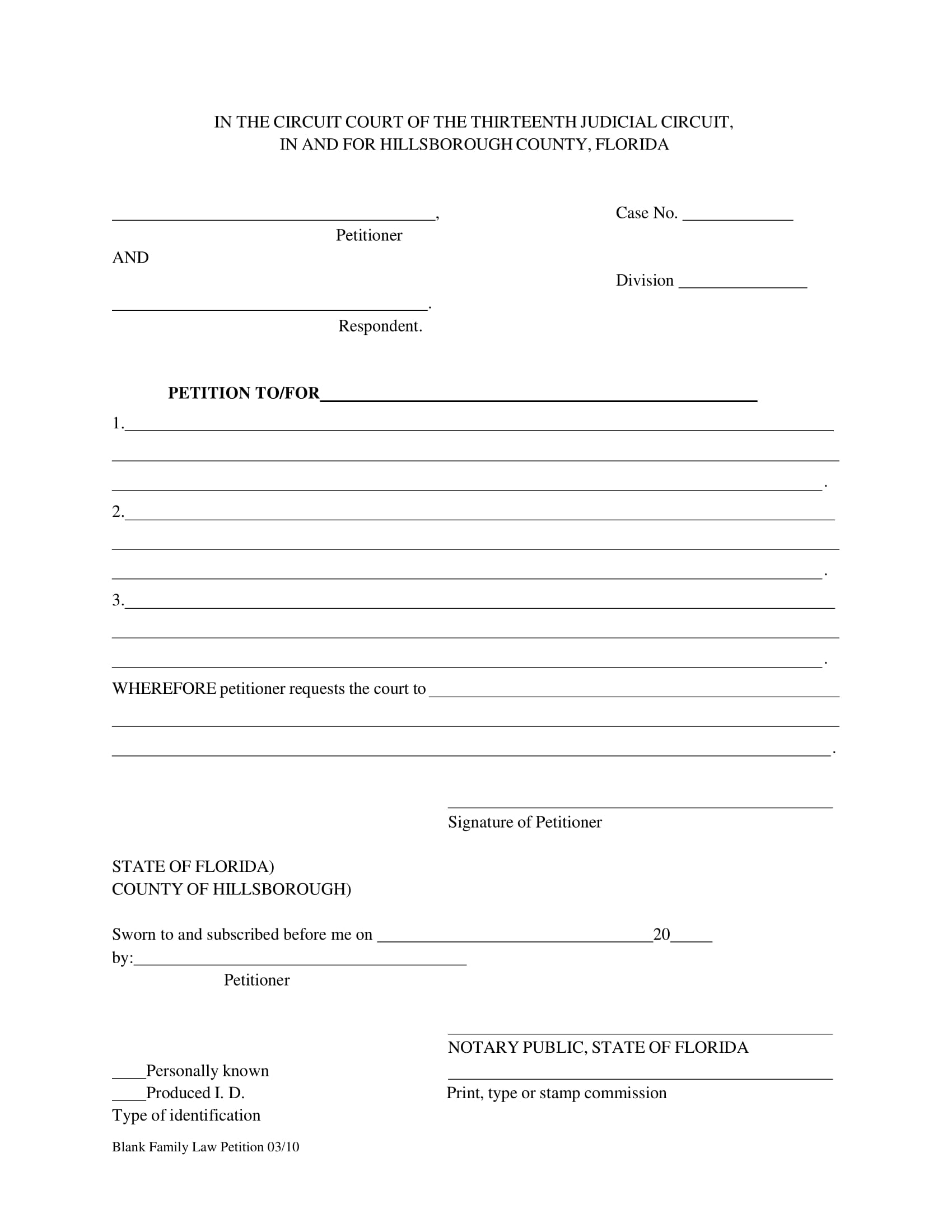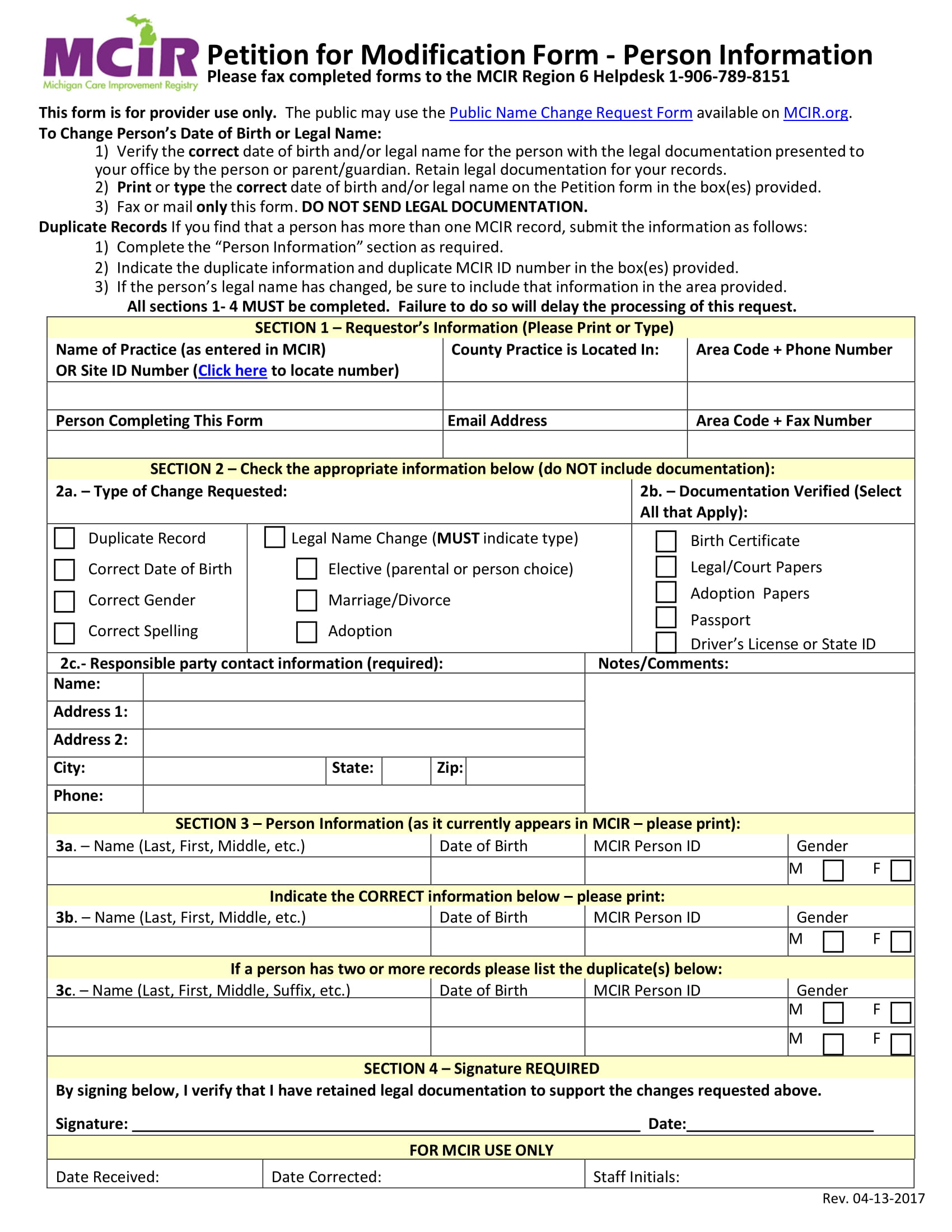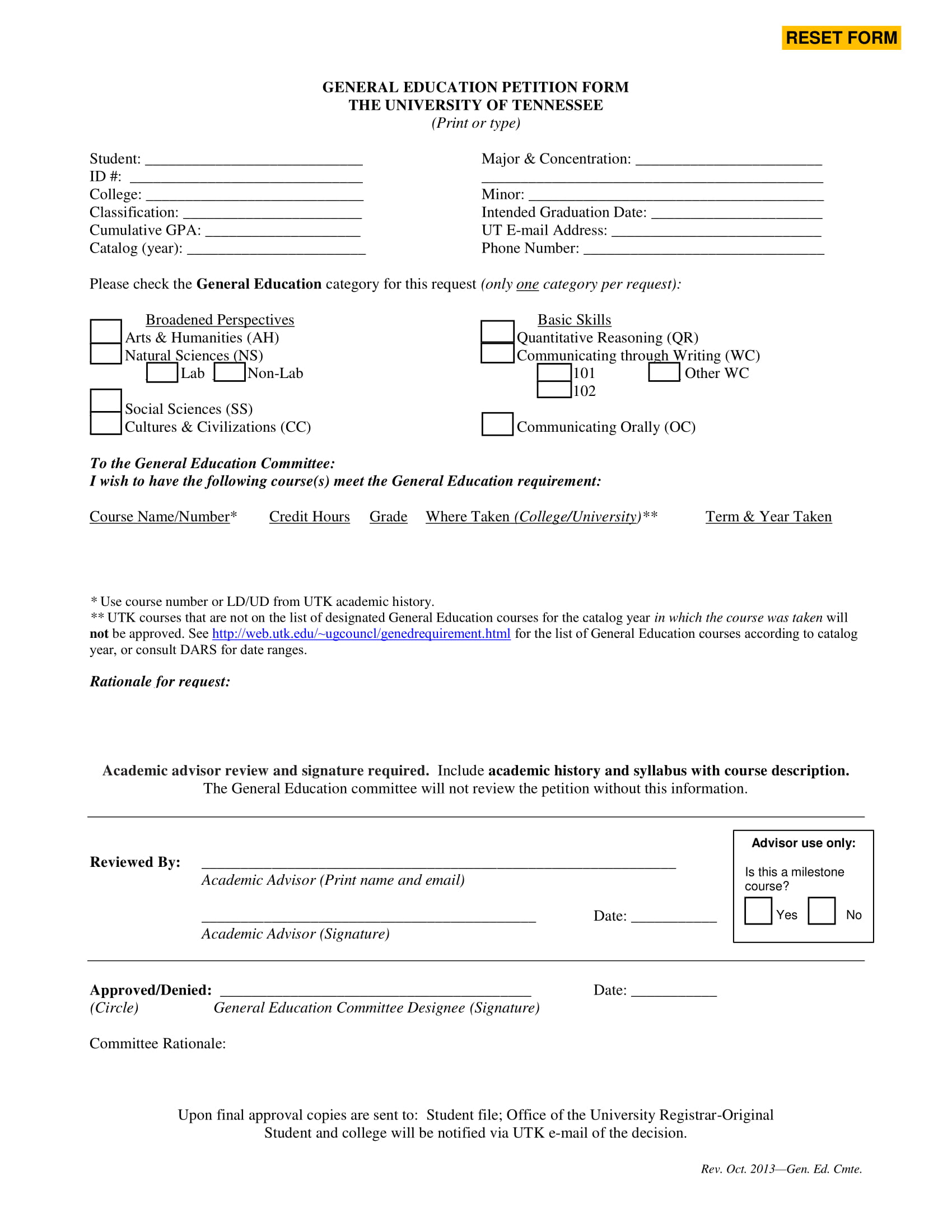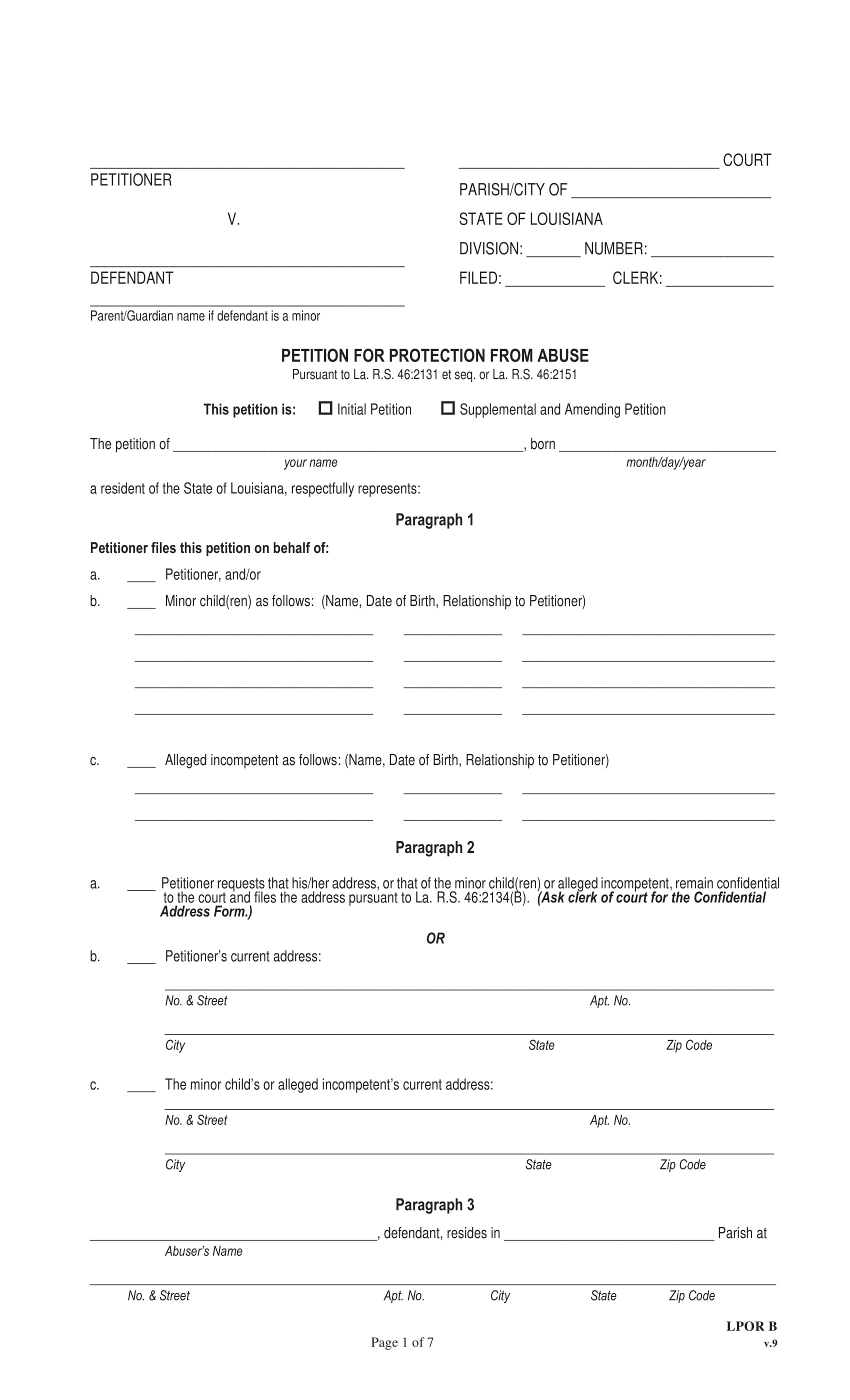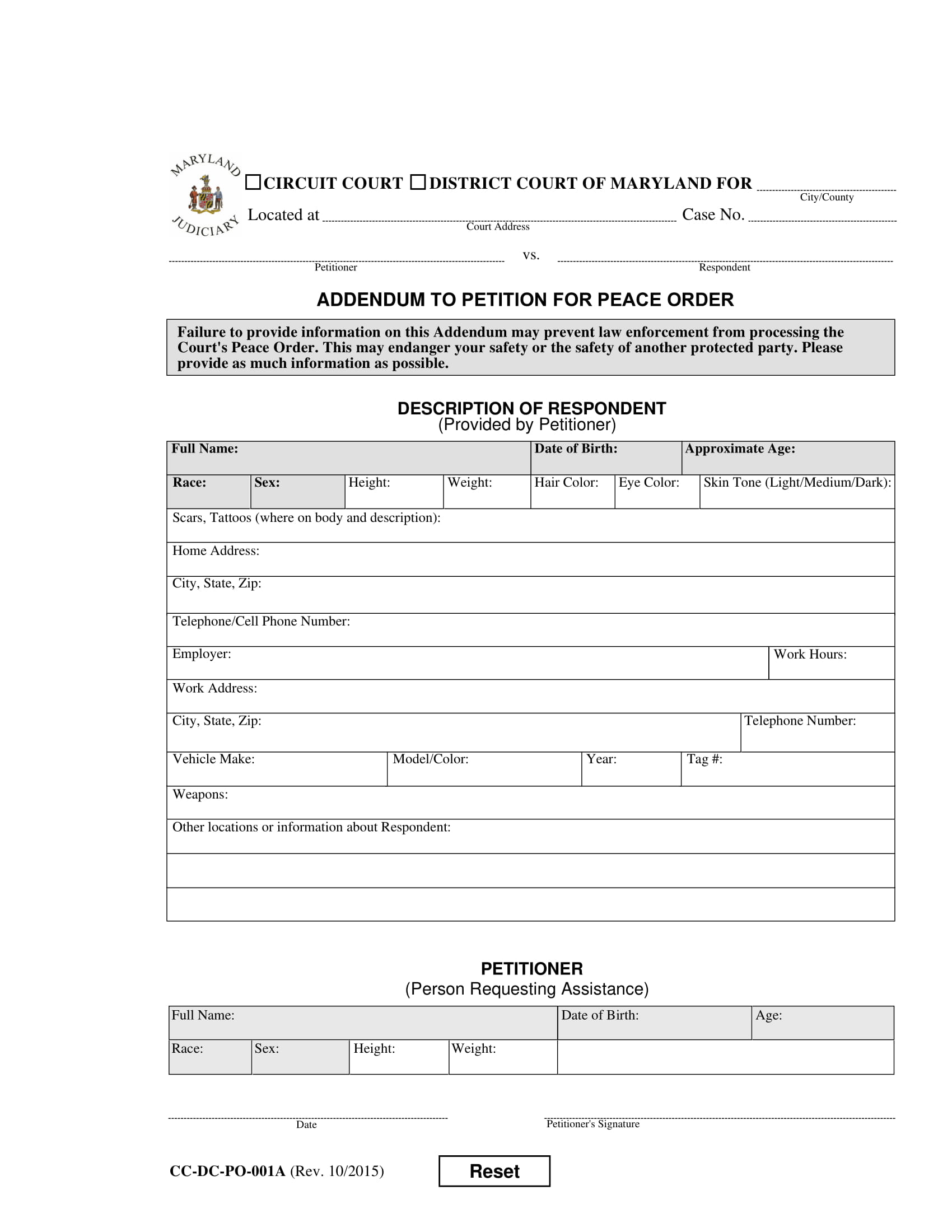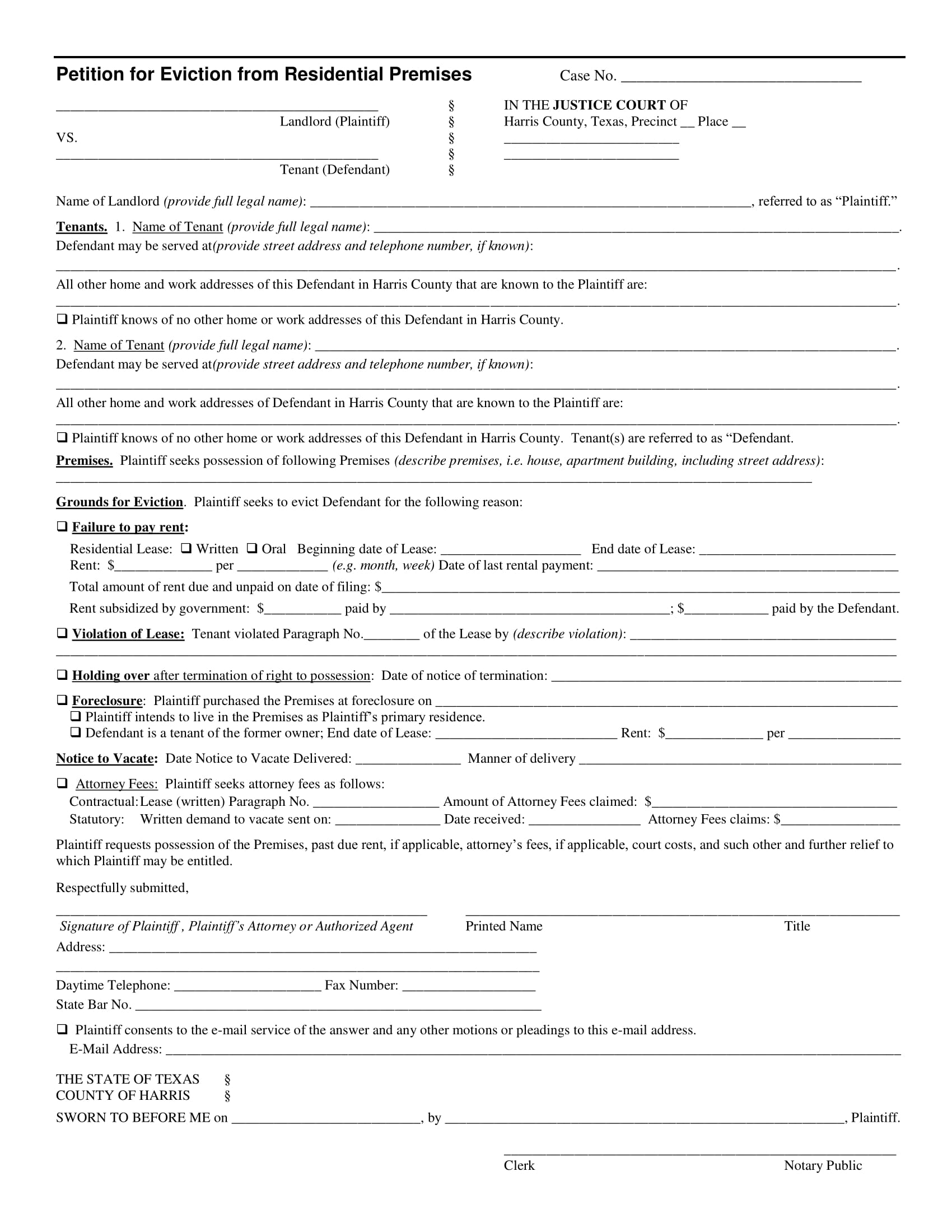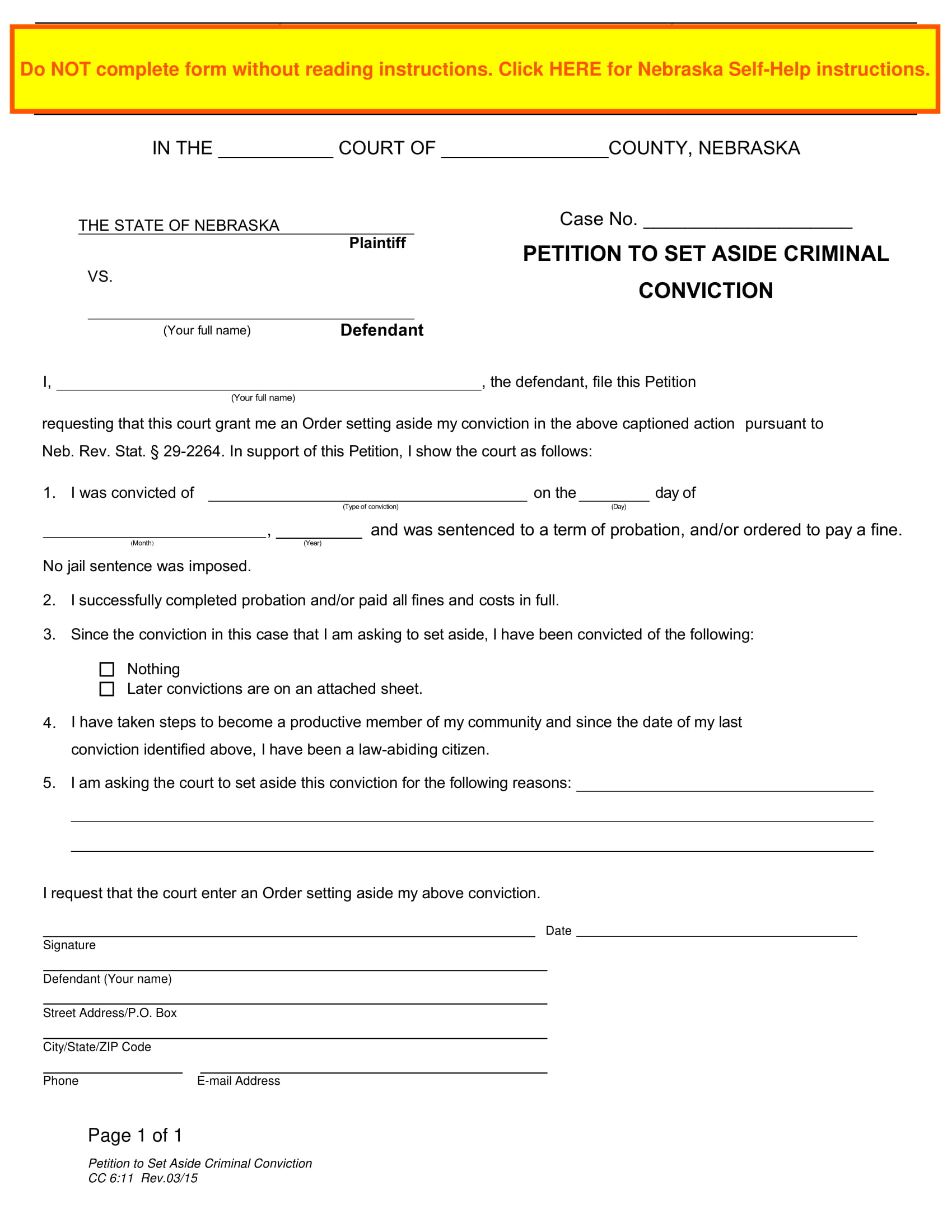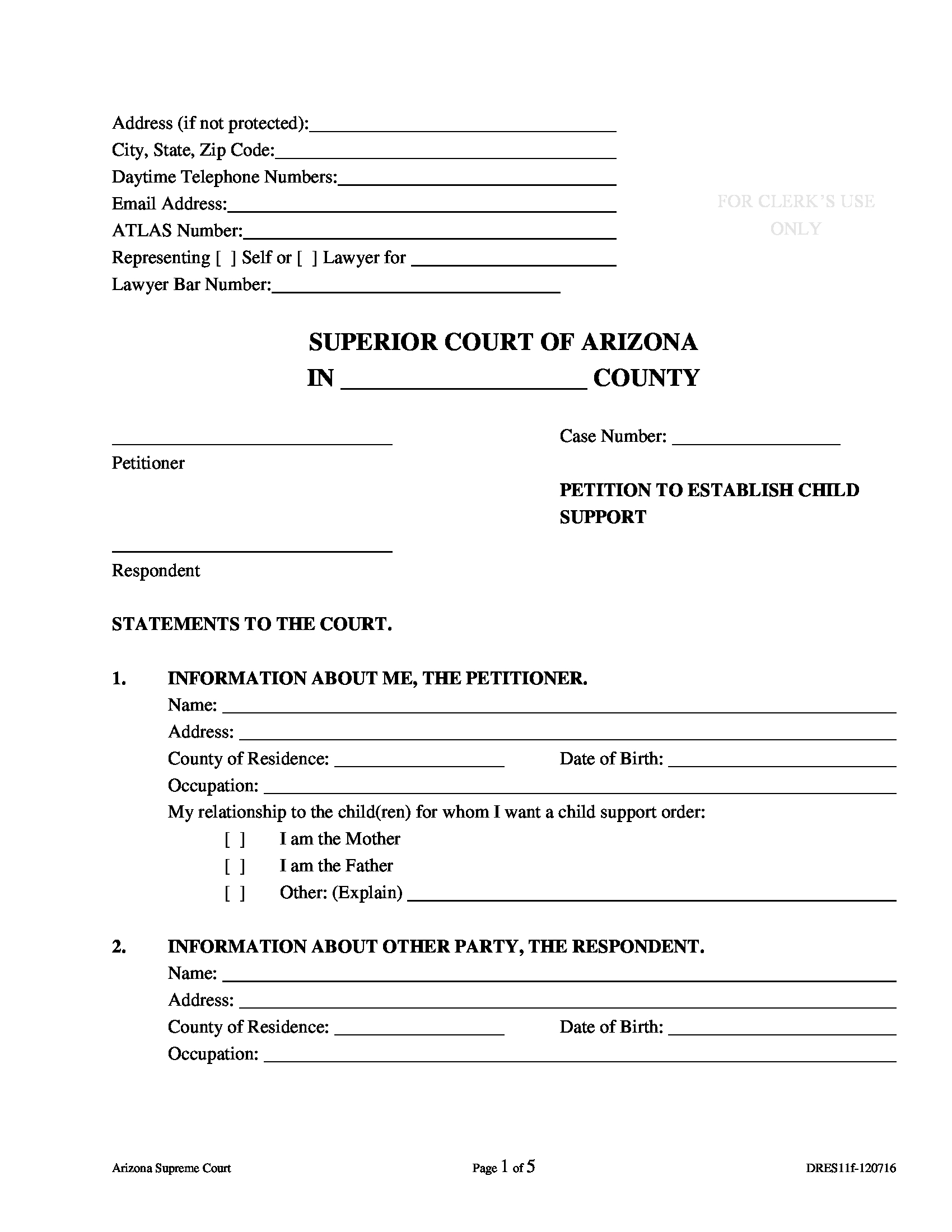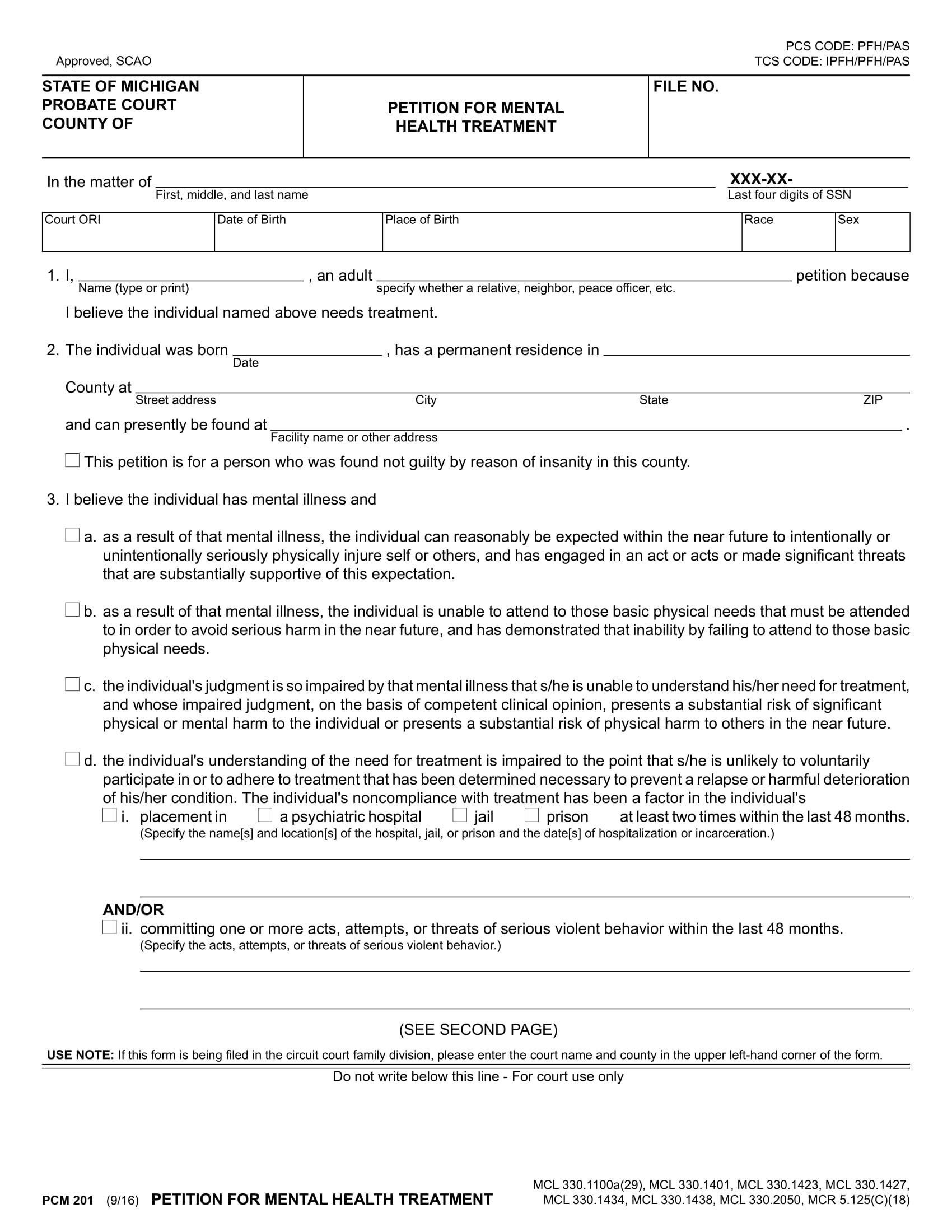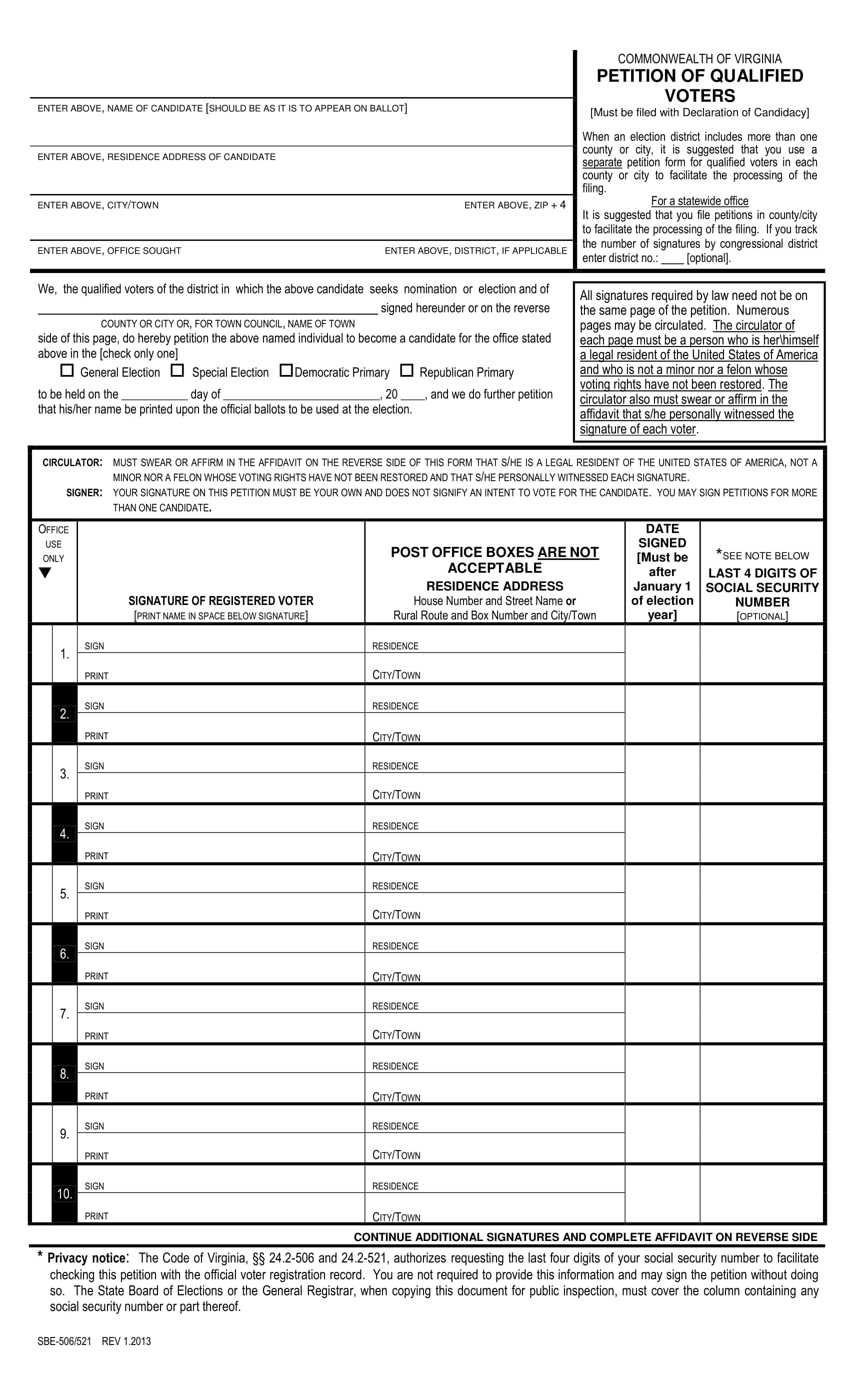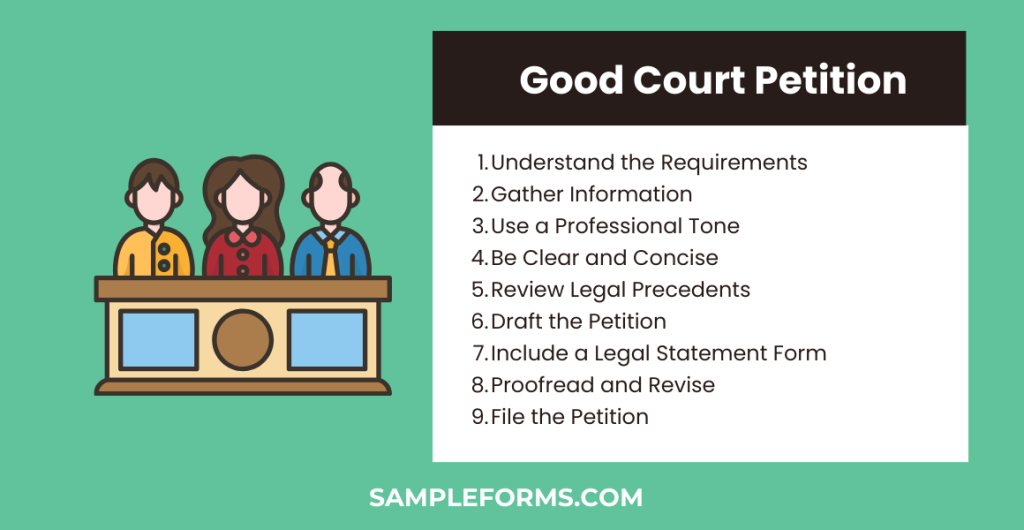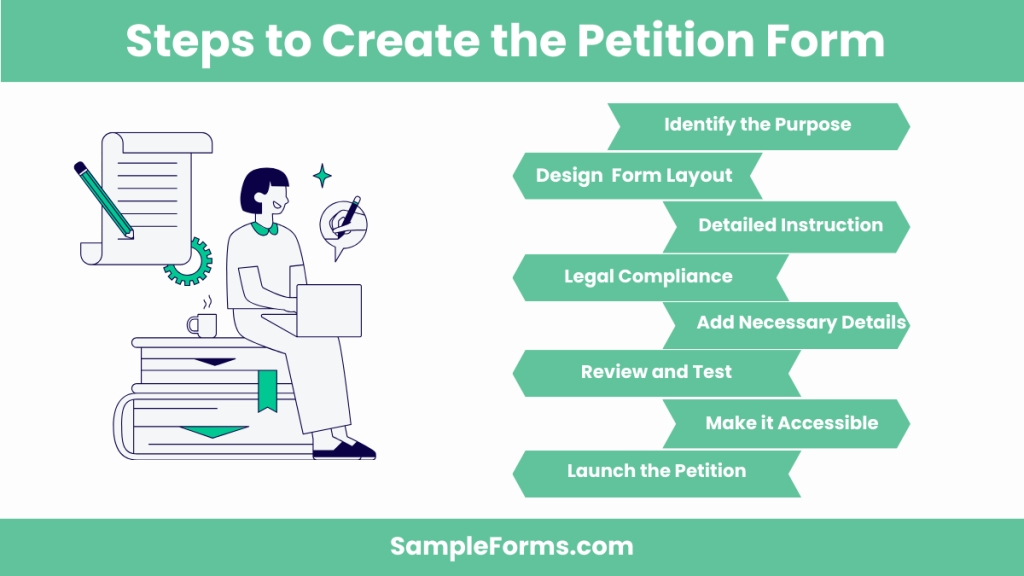Navigating the world of legal documents can be daunting, but understanding the essentials of a Legal Petition Form can simplify the process. This form is a crucial tool used to formally request a legal review or action from a court or governing body. Often integrating the essentials of both a Petition Form and a Legal Form, it serves as the foundational document in numerous legal proceedings. Whether you’re drafting a petition for a civil or criminal issue, understanding how to properly fill out and submit a legal petition form is vital. In this guide, we provide clear examples and step-by-step instructions to ensure you’re well-prepared to use this important document.
Download Legal Petition Form Bundle
What is Legal Petition Form?
A Legal Petition Form is a formal document used to request a legal judgment or action from a court or authority. This form is essential in initiating legal proceedings, providing a structured way for individuals to present their case or grievance to the relevant legal bodies. It must be filled out with precision, outlining the petitioner’s demands or claims, and supported by any necessary legal documents or evidence. The correct use of this form is crucial in ensuring that the legal process proceeds efficiently and in accordance with the law.
Legal Petition Format
1. Petitioner Information
- Name and Address: Full name and residential or business address of the petitioner.
- Contact Details: Telephone number and email address, if applicable.
2. Respondent Information
- Name and Address: Name and address of the respondent against whom the petition is filed.
- Relationship to Petitioner: Description of the respondent’s relationship or connection to the petitioner, if relevant.
3. Jurisdiction
- Court Name: The name of the court where the petition is being filed.
- Reason for Jurisdiction: Explanation of why this court has jurisdiction over the issues and parties involved.
4. Statement of Facts
- Chronological Facts: A detailed, chronological list of facts that support the petition.
- Relevant Dates and Events: Important dates and events that are pertinent to the case.
5. Claims or Causes of Action
- Legal Basis: The legal grounds upon which the petition is based.
- Requested Relief: Specific remedies or actions the petitioner is requesting from the court.
6. Evidence and Attachments
- Supporting Documents: List of documents attached to the petition, such as contracts, correspondence, photographs, etc.
- Witness List: Names and brief descriptions of the witnesses who may testify or provide evidence.
7. Conclusion
- Summary of Requests: A concise summary of the outcomes the petitioner seeks.
- Statement of Truth: A declaration that the information in the petition is true to the best of the petitioner’s knowledge.
8. Signature
- Petitioner’s Signature: The petitioner’s legal signature.
- Date: The date on which the petition is signed.
9. Attorney Information
- Attorney’s Name and Address: If represented by an attorney, include the attorney’s name and office address.
- Attorney’s Signature: The legal representative’s signature, affirming their representation of the petitioner.
Free Printable Court Form

Explore our free printable court forms designed to simplify legal proceedings, including the essential Legal Declaration Form to affirm statements under oath. You may also see Proof of Claim Form
Civil Court Form and petition
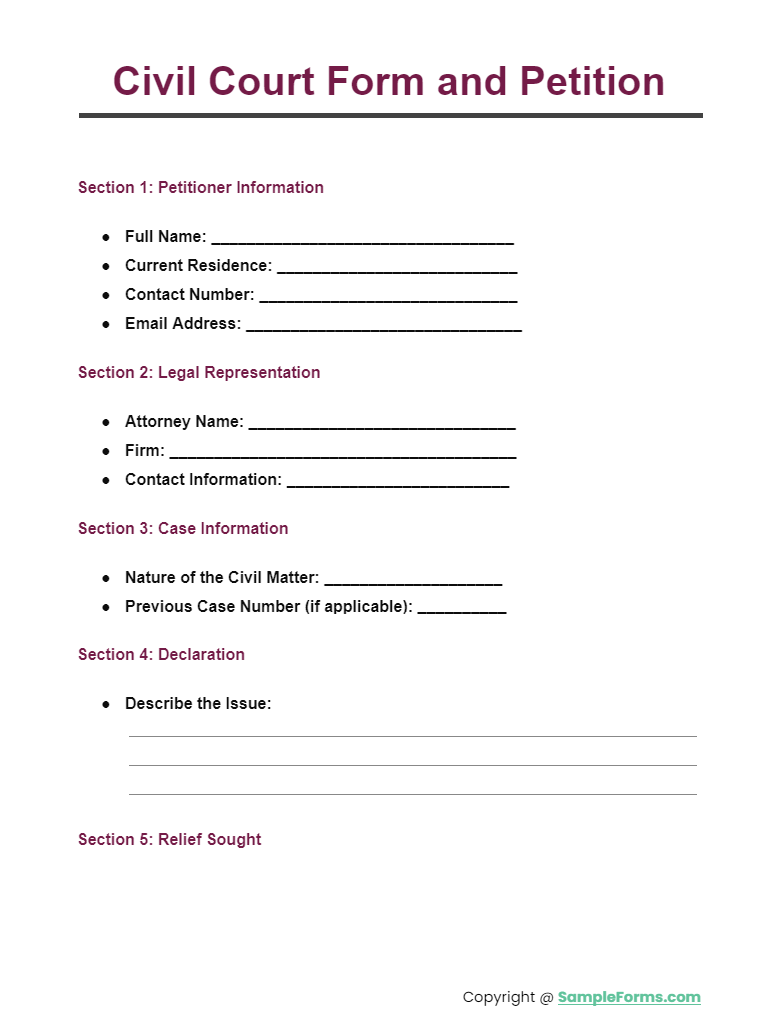
Our Civil Court Form and petition provide a comprehensive framework for civil cases, incorporating the Legal Ownership Form for property disputes. You may also see Medical Claim Form
Federal Court form Online
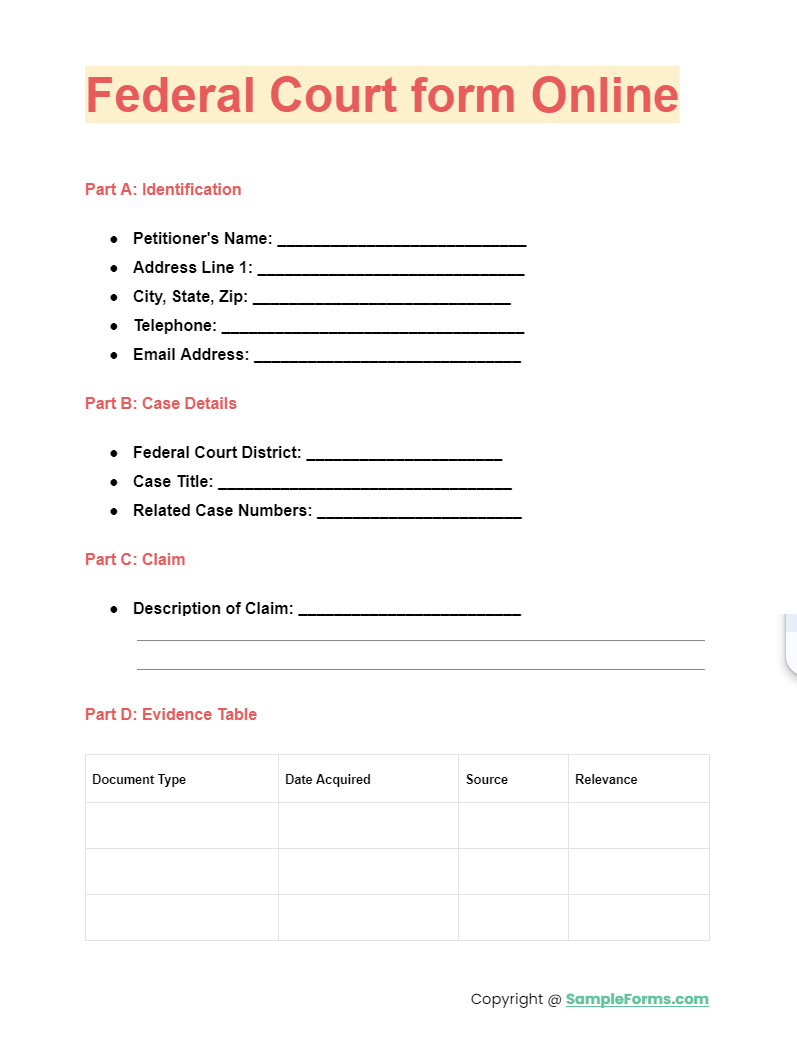
Access our Federal Court forms online, streamlined for federal legal processes, featuring the Legal Guardianship Form for appointing guardians. You may also see Notice of Claim Form
Blank Court Motion Form
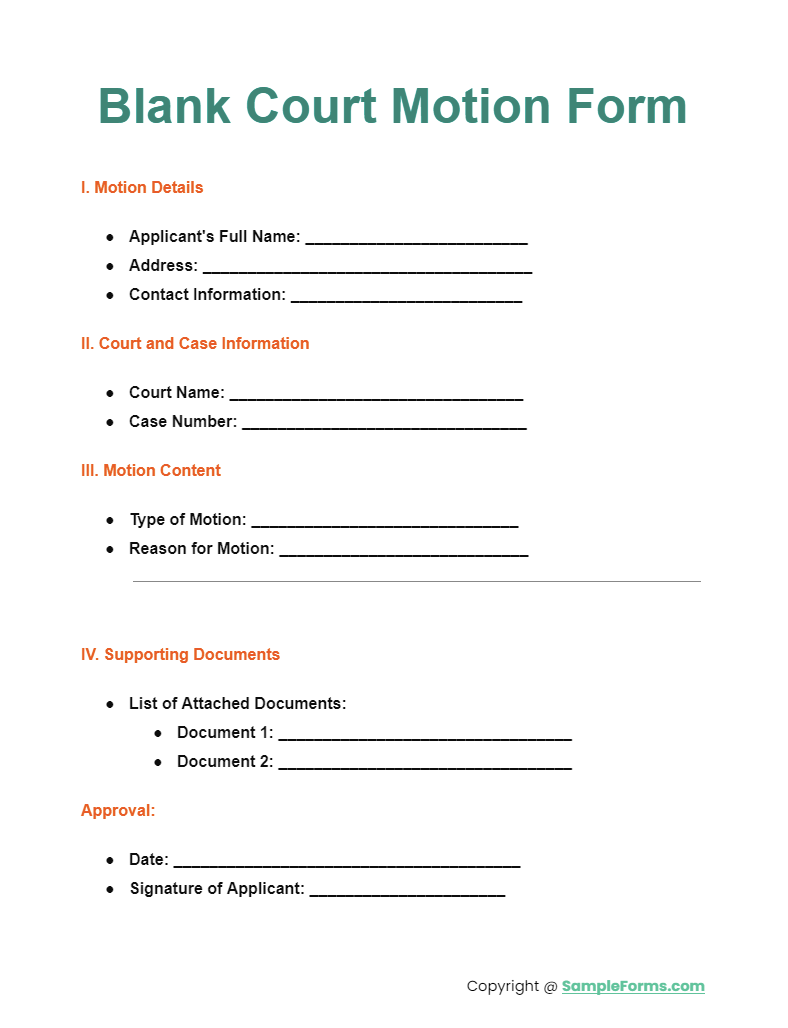
More Legal Petition Form Samples
Sample Legal Petition Form
Legal General Petition Form
Basic Legal Petition Form
Legal Petition for Legal Information Change
Legal Petition for Name Change Form
Legal Petition for Modification Form
Legal Petition for Academic/Education
Sample for Academic Petition Form
General Education Petition Form
This sample for academic petition form is often utilized when there are some missing requirements or credited courses in the curriculum of the student. In the form, the following details should be specified:
- the course details and information
- when and where the course/s are taken or should be taken
- the reason for the request or petition be made
- the signature of the submitting student
For the respondents of this petition, they are to indicate the action taken whether the request is approved or denied. The action taken is justified by indicating the reasons behind this decision.
Legal Petition for Peace/Protective Orders
Legal Petition for Protective Orders
Legal Petition for Peace Order Form
Legal Petition for Eviction from Residential
Legal Petition to Set Aside Criminal Conviction
Legal Petition for Child Support
Marriage/Domestic Partnership Petition Form
Legal Petition to Establish Child Support
Other Samples for Legal Petition Form
Legal Petition for Mental Health Treatment
Legal Petition of Qualified Voters
Technically, these petitions are essentially composed of the description of the situation, the proposition, suggestion, or recommendation of what should be accomplished, the convincing justifiable reasons of why such suggestions are necessary, and the specifications of the desired results and accomplishments when the petitions are approved. You may also see Dental Claim Form
How do I petition a court in Indiana?
To petition a court in Indiana, follow these steps:
- Determine the Type of Petition: Identify the nature of your case to select the correct form.
- Obtain the Petition Form: Visit the local court’s website or office to get the necessary Legal Application Form.
- Complete the Form: Fill out the form accurately, providing all required information.
- Attach Supporting Documents: Include any necessary documents to support your petition.
- File the Petition: Submit your completed form and documents to the court clerk.
- Pay Filing Fees: Pay any applicable fees required by the court.
- Serve the Other Party: Legally notify the other party of the court action.
- Attend Court Hearings: Appear in court on the scheduled dates to present your case. You may also see Business Expense Claim Form
What forms do I need to file a civil lawsuit in California?
To file a civil lawsuit in California, follow these steps:
- Identify the Correct Forms: Gather the Statement of Claim Form and any other relevant forms.
- Complete the Forms: Fill out each form with accurate information regarding your lawsuit.
- Review for Compliance: Ensure all legal requirements are met.
- File the Forms: Submit the forms to the appropriate California court.
- Pay the Filing Fee: Cover any required filing fees to process your lawsuit.
- Serve the Defendant: Legally notify the defendant of the lawsuit.
- Follow Up: Monitor your case status and prepare for any court appearances. You may also see Disability Claim Form
How do you write a good court petition?
To write an effective court petition, follow these detailed steps:
- Understand the Requirements: Research and understand the legal requirements for the petition in your jurisdiction.
- Gather Information: Collect all necessary information pertinent to your case.
- Use a Professional Tone: Write in a formal, respectful tone to address the court.
- Be Clear and Concise: Clearly state your request and the reasons for it in a concise manner.
- Review Legal Precedents: Reference similar cases and legal precedents that support your position.
- Draft the Petition: Use a structured format that includes your name, the case or docket number, and the detailed reason for your petition.
- Include a Legal Statement Form: Must include Legal Statement Form attach a sworn statement of facts to your petition.
- Proofread and Revise: Ensure there are no errors or omissions.
- File the Petition: Submit the completed petition to the appropriate court. You may also see Travel Claim Form
How do I create a petition form?
Creating a petition form involves several steps to ensure its effectiveness:
- Identify the Purpose: Clearly define the purpose of the petition.
- Design the Form Layout: Create a layout that includes fields for names, addresses, and signatures.
- Include Detailed Instructions: Provide clear instructions on how to fill out the form.
- Ensure Legal Compliance: Make sure the form complies with local laws and regulations.
- Add Necessary Details: Include a section for Legal Services Contract Form information if applicable.
- Review and Test: Check the form for usability and clarity.
- Make it Accessible: Ensure the form is accessible both in print and online.
- Launch the Petition: Distribute the form to potential signatories. You may also see Concierge Request Form
How do I find US court documents?
Finding US court documents can be streamlined by following these steps:
- Identify the Relevant Court: Determine which court’s documents you need.
- Visit the Court’s Website: Most US courts have online databases where you can search for documents.
- Use Online Databases: Platforms like PACER provide access to federal court documents.
- Visit the Court: Some documents may only be accessible by visiting the court in person.
- Request Documents: Submit a formal request if necessary, sometimes involving a Restaurant Legal Form depending on the jurisdiction. You may also see Employee Advance Request Form
How do I file a civil suit in Missouri?
Filing a civil suit in Missouri involves several critical steps:
- Determine the Proper Court: Find out which Missouri court has jurisdiction over your case.
- Obtain the Correct Forms: Collect all necessary forms, including the Claim Form.
- Complete the Forms: Accurately fill out the forms with all required information.
- File the Lawsuit: Submit your forms to the court, along with any filing fees.
- Serve the Defendant: Legally notify the defendant of the lawsuit.
- Prepare for Court: Gather all evidence and documents needed for your case. You may also see Business Request Form
What are the 5 steps to initiate a lawsuit?
To initiate a lawsuit, follow these essential steps:
- Consult an Attorney: Obtain legal advice to understand your rights and the strength of your case.
- Draft the Complaint: Prepare the initial legal document, the complaint, which outlines your case against the defendant.
- File the Complaint: Submit the complaint to the court along with the necessary Warranty Claim Form if applicable.
- Serve the Complaint: Ensure the defendant is officially notified of the lawsuit.
- Follow Court Procedures: Adhere to all court mandates and prepare for preliminary hearings or mediation. You may also see Accommodation Request Form
Basic Tips for Legal Petition Forms
For a more effective writing for legal petitions, below are few of the basic tips and guidelines that you could take note of.
- See to it that you have the full knowledge and awareness of what you are petitioning about.
- Instructions should be followed strictly in order to avoid any delays in processing your petition form.
- Make sure that all the pertinent or apposite facts that support your petition are indicated.
- Ensure that the title of your petition is able to identify what your petition is all about.
- Make sure that all the statements are written concisely.
- Your petition form should be submitted to the people who have the authority to have access to your petition.
- Take note of the basic tips on how to write a petition. You may also see Purchase Request Form
The Inclusions of a Legal Petition Form
Legal petitions do not necessarily need to have or be written with lots of details in it. Though you are to write the statements specifically, you just need to make sure that it is concisely written. By means of this, only those essential or relevant information should be found in the form. Nevertheless, referring to the following list below will serve as your guide to help you identify what you should include.
- The personal information of the individual petitioner/s
- The personal information of the respondent/s
- The title or name of the petition
- The specification of the request/s or petition
- The purposes or reasons for making the petition or request
- The statements that would explain briefly the reasons and purposes for making the petition
- The attachments of some documents that are considered as proofs or pieces of evidence
- The printed name and the affixed signature of the petitioner You may also see Travel Request Form
The names and/or the signatures of the other petitioners should also be included in the form. This is to ensure that they all agree and share the same purposes or goals for writing a petition. Moreover, the authorities responding or the respondents of the petition may indicate in the form whether the petition is granted, granted with conditions, or not granted. The reasons and/or remarks should be able to justify the petition status. In addition, the date of when the petition has been reviewed and approved, together with the signature of the official who decided on this matter, should be indicated on the form. You may also see Vacation Request Form
How much does it cost to file a civil suit in Indiana?
Filing a civil suit in Indiana typically incurs a base fee of $157, which may increase depending on case complexity and additional Quit Claim Deed Form requirements.
How long do you have to file a civil suit in Missouri?
In Missouri, the statute of limitations for filing a civil suit varies by case type, generally ranging from 2 to 5 years, requiring timely submission of an Insurance Claim Form.
How do I get court documents in Washington state?
To obtain court documents in Washington state, visit the Washington State Courts’ website or the specific courthouse, and utilize the Travel Expense Claim Form if traveling is necessary.
What is the burden of proof in a civil case?
In a civil case, the burden of proof typically requires the plaintiff to establish their case “by the preponderance of the evidence,” meaning more likely than not. You may also see Maintenance Request Form
Are Washington state court records public?
Yes, Washington state court records are generally public, with access available online and at court facilities, barring any Travel Insurance Claim Form confidentiality restrictions.
How much can you sue for in small claims court in Indiana?
In Indiana’s small claims court, the maximum amount for which you can sue is $8,000, not including court costs and necessary Small Claim Form submissions.
What is a petition for rule to show cause in Indiana?
A petition for rule to show cause in Indiana is a legal request to enforce a court order, often accompanied by a Claim Reimbursement Form when seeking owed payments.
In conclusion, the Legal Petition Form is an indispensable tool in the legal world, acting as the official Request Form for initiating a variety of legal actions. From court cases to administrative appeals, these forms, letters, and samples provide the necessary framework to formally present your legal needs and requests to the appropriate authorities.
Related Posts
-
FREE 4+ Uniform Commercial Code Forms in PDF
-
FREE 7+ Satisfaction of Mortgage Forms in PDF | MS Word
-
Notary Acknowledgment Form
-
FREE 10+ Car Sale Forms in PDF
-
FREE 3+ Acknowledgment of Paternity Forms in PDF
-
FREE 6+ Safety Acknowledgment Forms in PDF | MS Word
-
FREE 6+ Witness Acknowledgment Forms in PDF | MS Word
-
Character Reference for Court Recommendation Letter
-
License Agreement Short Form
-
FREE 10+ Trademark Assignment Forms in PDF | MS Word
-
FREE 13+ Trademark License Agreement Forms in PDF | MS Word
-
FREE 4+ Limited Partnership Agreement Long Forms in PDF | MS Word
-
FREE 5+ Movable Hypothec Long Forms in PDF | MS Word
-
FREE 4+ Articles of Association Long Forms in PDF | MS Word
